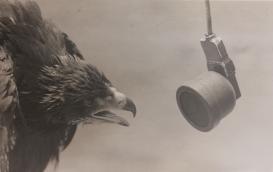“Listening to Nature: Standardized Soundscapes and Imagined Ecologies, 1900–2000” is a comparative study of how field scientists listen to the environment. As such, it is at the intersection of environmental history, history of science, sound studies, and sensory history. I show how sound and listening were centrally important to the development of modern conceptions of the environment and environmentalism. Through a series of case studies, spanning the twentieth century and across several cultural contexts, I examine the consequences of this listening for both American and German scientists’ and the public’s understanding of the environment. These consequences are, of course, informed by and implicate more than just scientific ideas. They were also bound up with environmental policies, hunting culture, resource management choices, and more. I focus on the intersection between early ethnomusicologists and naturalists, birders especially, as well as the role of listening in postwar management of natural resources, juxtaposing hunting traditions and bioacoustic monitoring. In the final case study, I explore the development of what I term conservation or extinction listening. I posit that listening to recordings of sounds known to be extinct or rapidly disappearing altered the way in which listeners subsequently engaged with both their soundscape and the concept of extinction. These sounds included not only disappearing species but also disappearing musical traditions, both Western and non-Western, and local soundmarks. By closely examining actual sounds and listening practices and comparing them across national contexts, I offer a new approach to understanding past human relationships with nature.

Project
(2017-2019)
